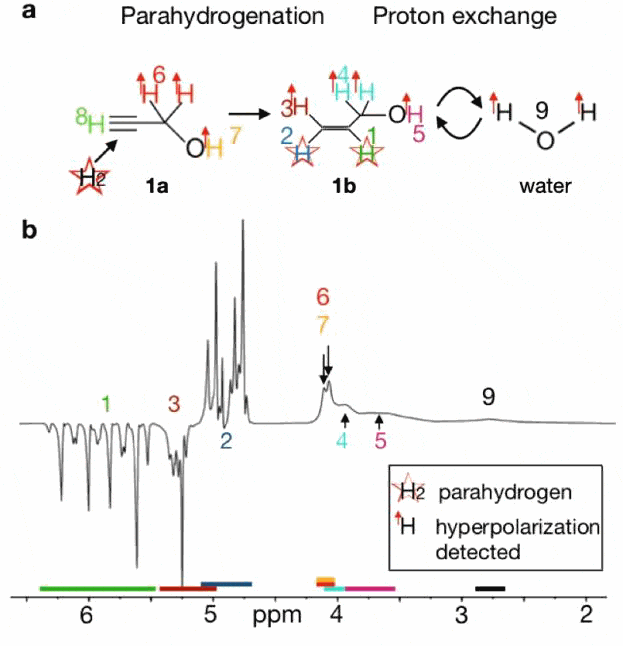190. Parahydrogen-induced polarization relayed via proton exchange
Kolja Them, Frowin Ellermann, Andrey N. Pravdivtsev, Oleg G. Salnikov, Ivan V. Skovpin, Igor V. Koptyug, Rainer Herges, Jan-Bernd Hövener; arXiv; (2020); Link: https://arxiv.org/abs/2012.03626
The sensitivity of NMR and MRI can be boosted via hyperpolarization of nuclear spins. However, current methods are costly, polarization is relatively low, or applicability is limited. Here, we report a new hyperpolarization method combining the low-cost, high polarization of hydrogenative parahydrogen-induced polarization (PHIP) with the flexibility of polarization transfer via proton exchange. The new method can be used to polarize various molecules, including alcohols, water, lactate, and pyruvate. On average, only ≈3 mM of a hyperpolarized transfer agent was sufficient to significantly enhance the signal of ≈100 mM of target molecules via proton exchange. Thus, hydrogenative parahydrogen-induced hyperpolarization with proton exchange (PHIP-X) provides a new avenue for NMR applications beyond the limits imposed by thermal polarization.
